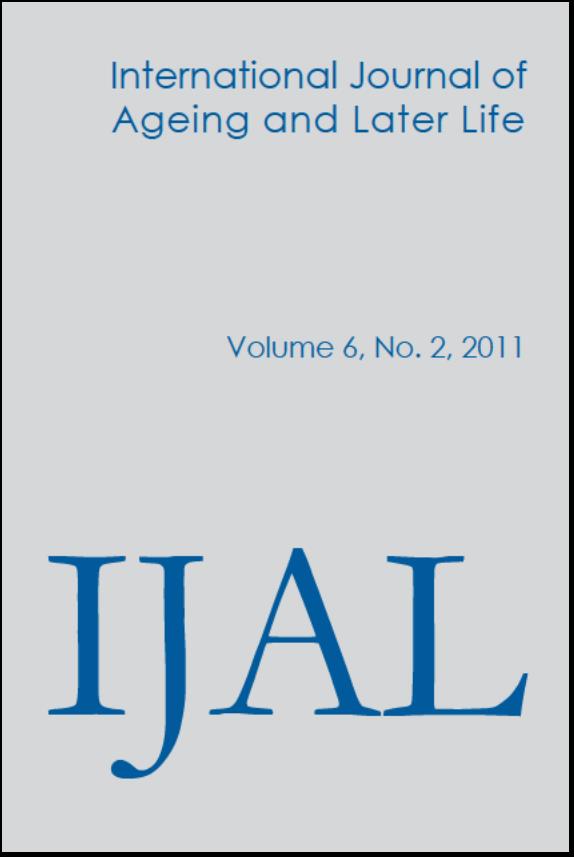Later life ICT learners ageing well
Main Article Content
Abstract
This article is based on a qualitative study of later life computer learners and their learning experiences in Sydney, Australia. Participants who undertook lessons from peer tutors in non-formal learning environments were aged between 63 and 86. Sixteen later life learners were interviewed individually by using hermeneutic phenomenological methodology. The use of semi-structured interviews provided opportunities for participants to elaborate and reflect on their learning and lived experiences. The interviews took place over a period of seven years, from 2003 to 2010. The main aim of the study was to understand and interpret the lived experiences of information and communication technology (ICT) learning in later life. Interpretations from the study suggested that learning and using a computer contributed to a sense of well-being, furthered an understanding of the lifeworld and provided participants with a heightened sense of belonging. In this article, well-being is discussed in the context of ageing and learning in a modern developed country. The ontological and existential themes of being, becoming and belonging are explored and used as a framework to interpret the findings from the study.
Metrics
Article Details

This work is licensed under a Creative Commons Attribution-NonCommercial 3.0 Unported License.
Since 2020 the International Journal of Ageing and Later Life uses a Creative Commons: Attribution license, which allows users to distribute the work and to reform or build upon it without the author's permission. Full reference to the author must be given.
References
Allport, G. (1955). Becoming. New Haven: Yale University Press. Blit-Cohen, E. & Litwin, H. (2004). Elder participation in cyberspace: A qualitative analysis of Israeli retirees. Journal of Aging Studies 18: 385–398.
Borglin, G., Edberg, A.-K. & Hallberg, I. R. (2005). The experience of quality of life among older people. Journal of Aging Studies 19(2): 201–220. doi: 10.1016/j.jaging.2004.04.001
Candy, P. C. (1991). Self-direction for lifelong learning: A comprehensive guide to theory and practice. San Francisco: Jossey-Bass.
Centre for Health Promotion. (2010). The quality of life model. Available on http://www.utoronto.ca/qol.concepts.htm (Accessed: April 17, 2010).
Czaja, S. J., Charness, N., Fisk, A. D., Hertzog, C., Nair, S. N., Rogers,W. A.& Sharit, J. (2006). Factors predicting the use of technology: Findings from the center for research and education on aging and technology. Psychology and Aging 21(2): 333–352. doi: 10.1037/0882-7974.21.2.333 PMid:16768579 PMCid:1524856
Erikson, E. H., Erikson, J. M. & Kivnivk, H. Q. (1986). Vital involvement in old age. New York: W. W. Norton.
Frankl, V. E. (1984). Man’s search for meaning. New York: Washington Square Press.
Heidegger, M. (1962). Being and time (J. Macqaurie & E. Robinson, Trans.). Oxford: Blackwell.
Hernandez-Encuentra, E., Pousada, M. & Gomez-Zuniga, B. (2009). ICT and older people: Beyond usability. Educational Gerontology 35(3): 226–245. doi: 10.1080/03601270802466934
Hrimech, M. & Bouchard, P. (1998). Spontaneous learning strategies in the natural setting: Learning how to use computers. In H. B. Long.& Associates (eds.), Developing paradigms for self-directed learning (pp. 27–44). Oklahoma: University of Oklahoma.
Ihde, D. (1990). Technology and the lifeworld: From garden to earth. Bloomington: Indiana University Press.
Jarvis, P. (2001). Learning in later life: An introduction for educators & carers. London: Kogan Page.
Kelly, J. R. (1993). Introduction. In J. R. Kelly (ed.), Activity and aging: Staying involved in later life. Newbury Park, CA: Sage.
Kidd, J. R. (1973). Relentless verity. Education for being-becoming-belonging. Syracuse, NY: Syracuse University.
Mahmood, A., Yamamoto, T., Lee, M. & Steggell, C. (2008). Perceptions and use of gerontechnology: Implications for aging in place. Journal of Housing for the Elderly 22(1): 104–126. doi: 10.1080/02763890802097144
Moody, H. R. (1986). Late life learning in the information society. In D. A. Peterson, J. E. Thornton & J. E. Birren (eds.), Education and aging (pp. 122–143). Englewood Cliffs, NJ: Prentice-Hall.
Mynatt, E. D. & Rogers, W. A. (2001). Developing technology to support the functional independence of older adults. Ageing International 27(1): 24–41. doi: 10.1007/s12126-001-1014-5
Organisation for Economic Co-operation and Development (OECD) (2001). The well-being of nations: The role of human and social capital. Available on http://www.oecd.org (Accessed: April 4, 2004).
Organisation for Economic Co-operation and Development (OECD) (2003). OECD publication identifies key competencies for personal, social, and economic well-being. Available on http://www.oecd.org (Accessed: April 17, 2010).
Rogers, C. R. (1969). Freedom to learn. Columbus: Merrill.
Slegers, K., van Boxtel, M. & Jolles, P. (2007). The effects of computer training and internet usage on the use of everyday technology for older adults: A randomized controlled study. Educational Gerontology 33(2): 91–110. doi: 10.1080/03601270600846733
Thorson, J. A. (1978). Future trends in education for older adults. In R. H. Sherron & D. B. Lumsden (eds.), Introduction to educational gerontology (pp. 201–227). Washington, DC: Hemisphere.
TSAO Foundation. (2004). The structure of successful ageing. Available on http://www.tsaofoundation.org/articles/successful04.html (Accessed: April 5, 2004).
Wolf, M. A. (1998). New approaches to the education of older adults. In J. C. Fisher & M. A. Wolf (eds.), Using learning to meet the challenges of older adulthood (pp. 20–36). San Francisco: Jossey-Bass.
World Health Organization (WHO) (2002). Active ageing: A policy framework. Available on http://www.who.int/hpr/againg/ActiveAgeing PolicyFrame.pdf (Accessed: April 4, 2004).





